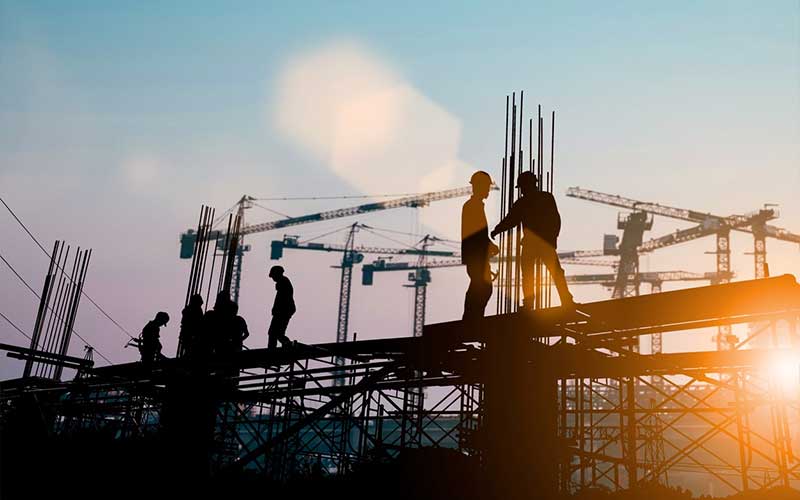
The Hidden Menace: Unraveling the Complex Tapestry of Consequences Tied to Illegal Constructions
Introduction:
Illegal constructions, a pervasive issue in many parts of the world, create a ripple effect that extends far beyond the immediate boundaries of the unauthorized structures. These clandestine developments, often erected without proper permits or adherence to building codes, cast a long shadow on society, impacting safety, the environment, the economy, and even the cultural fabric of communities. In this exploration, we will dissect the multifaceted results of illegal constructions, shedding light on the intricate web of consequences that ensue.
- 1. Compromised Safety and Structural Integrity:
One of the most immediate and alarming outcomes of illegal construction is the compromise of safety. These structures, lacking the scrutiny of proper engineering oversight, are prone to structural failures. Collapses, fires, and other disasters become more likely, turning these illegal constructions into potential death traps for both occupants and passersby. The inherent risk to human life is a grave consequence that cannot be understated.
2. Strain on Infrastructure:
Illegal constructions exert tremendous pressure on existing infrastructure beyond its intended capacity. Municipal services such as water supply, sewage systems, and electricity grids may be ill-equipped to handle the increased demand brought about by unauthorized developments. This strain not only affects the immediate area but can lead to a domino effect, impacting neighboring communities and exacerbating pre-existing infrastructure deficiencies.
3. Environmental Degradation:
The environmental repercussions of illegal constructions are far-reaching and often irreversible. These unauthorized structures encroach upon natural habitats, leading to deforestation, loss of biodiversity, and disruption of ecological balance. The improper disposal of construction waste contributes to soil and water pollution, further deteriorating the environment. The cumulative impact on ecosystems can be devastating, with long-term consequences for the planet.
4. Economic Implications:
The economic fallout from illegal constructions is significant and multi-dimensional. Property values in the vicinity of unauthorized developments may plummet due to safety concerns and reduced livability. Additionally, governments are compelled to allocate resources for the demolition of illegal structures and the rehabilitation of affected areas, diverting funds that could be better utilized elsewhere. The economic strain extends to businesses in the area, affecting their viability and growth potential.
- Social Displacement and Injustice:
Illegal constructions often lead to social displacement as vulnerable populations, seeking affordable housing, are drawn to these unauthorized developments. When authorities intervene to rectify the situation, residents may find themselves without homes, exacerbating social inequality and injustice. The consequences of illegal constructions disproportionately affect marginalized communities, perpetuating a cycle of poverty and instability.
6. Impact on Urban Planning:
The haphazard nature of illegal constructions disrupts urban planning efforts. Cities and municipalities strive to create cohesive and sustainable urban environments, but unauthorized developments hinder these goals. Planning regulations are circumvented, leading to chaotic and unplanned growth that undermines the overall vision of the city. This impacts not only the aesthetics of the urban landscape but also the functionality and efficiency of public spaces.
7. Legal and Regulatory Challenges:
Addressing illegal constructions poses legal and regulatory challenges for authorities. Identifying and prosecuting those responsible for these developments can be a complex task. Legal proceedings may be protracted, allowing the situation to worsen over time. The lack of enforcement can also set a dangerous precedent, encouraging others to flout regulations. This creates a perpetual cycle of non-compliance that further strains regulatory frameworks.
8. Public Health Concerns:
Illegal constructions often lead to substandard living conditions, with inadequate sanitation and hygiene facilities. This can give rise to public health concerns, as densely populated areas lacking proper infrastructure become breeding grounds for diseases. The spread of infectious diseases becomes more likely, affecting not only the residents of these illegal structures but potentially the broader community.
9. Increased Crime Rates:
Areas with a prevalence of illegal constructions often experience higher crime rates. The lack of proper urban planning and surveillance makes these locations more susceptible to criminal activities. Illegally built structures can provide hiding places for criminals, and the overall instability in these areas creates an environment conducive to illicit activities.
10. Loss of Cultural Heritage:
Illegal constructions sometimes encroach upon historically or culturally significant sites. The disregard for zoning regulations and preservation efforts can result in the destruction of heritage structures and landscapes. This loss not only erodes a community’s identity but also deprives future generations of valuable historical landmarks.
11. Stifled Economic Growth:
Illegal constructions can hinder legitimate economic activities in a region. As these developments often operate outside the formal economy, they evade taxes and regulations. This not only deprives local governments of revenue but also creates an uneven playing field for businesses that abide by the rules. Stifled economic growth becomes a consequence of the shadow economy perpetuated by illegal constructions.
12. Long-Term Environmental Impact:
The environmental impact of illegal constructions extends beyond immediate degradation. As these structures often lack sustainable practices, their carbon footprint can be disproportionately high. Poor waste management, lack of green spaces, and disregard for energy efficiency contribute to long-term environmental challenges, exacerbating climate change and ecological degradation.
13. Community Distrust and Discontent:
The presence of illegal constructions can breed distrust within communities. When residents witness unauthorized developments going unpunished, they may lose faith in local authorities and institutions. This erosion of trust can lead to social unrest and discontent, further complicating efforts to address the broader issues associated with illegal constructions.
Conclusion:
The results of illegal constructions are a complex tapestry of intertwined consequences that demand urgent attention and comprehensive solutions. Tackling this issue requires a holistic approach that combines stringent enforcement of regulations, community engagement, and proactive urban planning. By addressing the root causes and consequences simultaneously, societies can work towards creating resilient and sustainable urban environments that prioritize the well-being of both current and future generations. The fight against illegal constructions is not merely a legal battle; it is a collective effort to safeguard lives, protect the environment, and build communities that stand the test of time.


